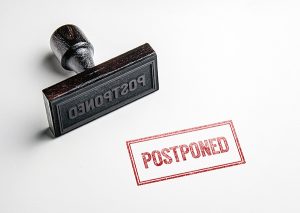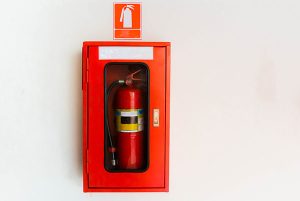February 2023
Inside This Issue
SAG is Now Program Specific:

There are no new requirements discussed in this month’s issue of Perspectives, so we will change our order of presentation to first discuss what is new in the 2023 Survey Activity Guide posted to your secure extranet site (Joint Commission Connect). The first thing you will notice is that this year’s SAG is program specific, instead of being one document for all accreditation programs.
If you have a hospital with home care or behavioral healthcare, you will have to download two or three different guides. However, if you are a single program this change may make your ability to focus somewhat easier.
 Day One Document List Changes:
Day One Document List Changes:
In looking at the 2023 Hospital SAG we noticed some changes to the mandatory “day one” document list as compared to 2022. You will want to update your file folders and numbering sequence for these important documents as there are some deletions and the total number of mandatory documents, “in theory” went from 57 to 47. We say in theory because while there are two genuine deletions, several other deletions are the result of collapsing individually numbered emergency management documents into one document comprised of sections a-j.
Antibiotic Stewardship Standards:

Mandatory document #44 is new for 2023, requesting your antibiotic stewardship program reports to leadership and prescribers. Here you will want to think in terms of what has been asked of prescribers, what has been done to educate them and what are the results from the organization’s efforts. Going forward it might be best to think of this as an annual report analyzing actions, results, and additional modifications to the program, similar to what is already done with EC and IC reporting.
BHC Environmental Risk Assessments:
Document #47 now asks for a copy of the environmental risk assessment for any behavioral health units, which may make the survey process a little simpler for organizations and surveyors. This document has often been requested ad hoc by surveyors and often not asked of the correct or most knowledgeable person who then inadvertently provides an outdated document without command center knowledge or input.
We always recommend that accreditation coordination staff be responsible for organizing all documents requested by a surveyor and when doing so do a quick scan to verify that the document is the most recent update. In the case of the behavioral health environmental risk assessment, many organizations have been steadily making improvements for years and an older document may not reflect changes made to eliminate potential hazards, or identify fixtures that were once, but are no longer considered ligature safe.

Medical Staff Bylaws and Rules:
TJC still asks for a copy of the medical staff bylaws and rules and regulations (#28) so that they can verify content requirements relative to MS.01.01.01. This year they refined their request to add that if there have been any changes to these documents since your last survey to have those new sections/content flagged for the surveyor to review.
If either the bylaws or rules and regulations state up front that there was an update in 2021 or 2022, the surveyor will expect that you have marked any new content for their review. For example, if you took advantage of the extended deadline for privilege renewals to three years, they would want to see where that is documented in your bylaws.
 ORYX Data:
ORYX Data:
Document #37 ORYX data is somewhat changed in that they now ask you to provide a copy of the ORYX data and Accelerate PI Dashboard reports for surveyor review. Previously these were available electronically for surveyors to review ahead of time, but with changes in data submission platforms and requirements in recent years, they now want hospitals to make this available.
Organ Donation and Procurement:
Document #22 from last year’s listing required the hospital to provide information on organ donation and procurement conversion rates. This requirement has been dropped for 2023 as the EP has been deleted. This discussion item has also been deleted from the survey process guidance for the data system tracer. It is expected that in 2023 the medication management, data use, and infection prevention system tracers should all be combined into one discussion group.
 Safety Briefing and Leadership Session:
Safety Briefing and Leadership Session:
The 2023 SAG also provides additional guidance to the new Surveyor Safety Briefing we mentioned in our November Newsletter. The leadership session will now include discussion about the new health care equity standards, so leaders will want to be able to summarize actions taken on this initiative.
Updated EC/LS Document Tool:
Lastly, the 2023 SAG references includes an updated environment of care and life safety code document tool on pages 53-67. This tool does require some documentation and analysis. It appears to have minimal changes in underline format from the prior year, but you will want to present the latest version to your surveys.
 ORYX Data Submission Platform Delay:
ORYX Data Submission Platform Delay:
The lead article in Perspectives mentions a delay in the availability of the new direct data submission platform for ORYX data. Apparently, the new platform requires additional refinement to provide a more stable environment for users.
The submission deadline for 2022 electronic clinical quality measure data has been extended from March 15 to June 14, 2023. The deadline for chart abstracted 2022 measurement data has been extended from April 30 to June 14, 2023. Lastly the first submission of 2023 data has been delayed from May to anticipated mid-July 2023.
Portable Fire Extinguishers:
 This month’s Consistent Interpretation column discusses EP 10 of LS.02.01.35 regarding placement of portable fire extinguishers. It has a fairly large noncompliance rate at a little over 19% of hospital surveys conducted last year. This particular EP addresses signage and placement (mounted no more than 5 feet high and at least every 75 feet down a hallway). Scoring for failure to inspect the fire extinguisher actually takes place at EC.02.03.05, EPs 15 and 16.
This month’s Consistent Interpretation column discusses EP 10 of LS.02.01.35 regarding placement of portable fire extinguishers. It has a fairly large noncompliance rate at a little over 19% of hospital surveys conducted last year. This particular EP addresses signage and placement (mounted no more than 5 feet high and at least every 75 feet down a hallway). Scoring for failure to inspect the fire extinguisher actually takes place at EC.02.03.05, EPs 15 and 16.
We do see some organizations that are surprised at the 5-foot mounting height issue, but overall scoring is higher than we would have anticipated for this EP. There is one aspect mentioned in the guidance section that is important for behavioral health settings where many organizations want to lock up their fire extinguishers so that patient cannot use them as a weapon. Locks are permitted, but if your fire extinguishers are locked, each staff member must have a key to unlock the fire extinguisher in the event of an emergency.
 Deleted Standard Explanations:
Deleted Standard Explanations:
The lead article in this month’s EC News sheds some light on the rationale for deletion of two of the elements of performance discussed last month as gone, but perhaps not forgotten. TJC explains that EC.02.01.03, EP 1 that prohibited smoking in the organization was deleted because it was redundant with another EP.
In this case LS.02.01.70, EP 1 also prohibits smoking wherever flammable liquids, combustible gases or oxygen is used or stored. In plain English, the requirement has not gone away, and practices should not change as the issue can still be scored.
Similarly, LS.02.01.40, EP 2 which requires an organization to meet all other life safety code automatic extinguishing requirements was announced as deleted last month. Again, TJC explains that the requirement was redundant with other similar requirements and NFPA 101, therefore not needed.
 Cleaning Kitchen Exhaust Systems:
Cleaning Kitchen Exhaust Systems:
EC News has a good article on cleaning kitchen exhaust systems of grease to prevent fires. The important teaching point is that it is not just the exhaust hood that needs thorough cleaning but also the vent stack that takes the cooking fumes, carrying some grease particles, up and out of the building. TJC advises in this article cleaning this entire stack every 3-6 months depending on usage and the reference for this is in NFPA 96-2011.
There is a picture of a vent stack prior to and after cleaning that drives home the importance of this periodic cleaning. This picture really says it all when you look at it. The article also points out the value of properly cleaning grease filters in the hood to make them more effective at preventing grease from going up the stack.
You will want to share this article with your facilities and dietary leadership to ensure that this complete cleaning process is taking place. This article prompted us to take another look at the SAG which contains a very useful kitchen tracer tool. The tracer tool does mention cleaning the grease filters above a range hood but does not include this additional advice about the vent stack.
Coincidentally the last article in EC News discusses another of their for sale products from JCR and includes a checklist for identifying kitchen fire safety compliance. We did notice that this tool does specifically mention cleaning the exhaust system per NFPA 96-2011 which is explained in the article about grease fires.
 End of the Public Health Emergency:
End of the Public Health Emergency:
CMS did issue three QSO memos of importance to our readers during the past month, but more importantly on January 30th the President announced an end-date for the Covid Public Health Emergency or PHE. It is now planned that the PHE will end on May 11, 2023.
During the three (3) years of the PHE, many waivers from regulatory requirements were issued and many enhanced payment mechanisms were developed to expand access to publicly funded care. Some of those enhanced payment mechanisms have been accounted for in Congressional and CMS actions as have flexibilities for telehealth services.
Programmatic and documentation waivers from COP requirements appear to be discontinued at this time, however, keep an eye on the CMS website and press releases as this may change as we get closer to the end date. We have identified a nice summary of all the flexibilities describing what continues and what is likely to end from the Kaiser Family Foundation that may be a useful resource for your planning effort. Here is the link to the Kaiser analysis.
 Quality Videos:
Quality Videos:
On January 19 CMS issued QSO 23-06 announcing the availability of quality videos for many different provider types, explaining some issues that lead to noncompliance on CMS surveys. The videos use an animated cartoon like presenter, who sounds somewhat robotic, but the content is certainly worth taking a look at even though the format is somewhat of a distraction.
Videos are available for hospitals, ambulatory, home care, and many other providers for online viewing. The QSO memo can be downloaded using this link, and within the memo is a link to the quality videos.
Rural Emergency Hospitals:
 On January 26 CMS issued QSO 23-07 announcing a new provider type called a Rural Emergency Hospital and they provided conditions of participation for organizations that may consider creating such an entity. The CoPs for REHs borrow substantially from the CoPs for critical access hospitals and ambulatory surgical facilities.
On January 26 CMS issued QSO 23-07 announcing a new provider type called a Rural Emergency Hospital and they provided conditions of participation for organizations that may consider creating such an entity. The CoPs for REHs borrow substantially from the CoPs for critical access hospitals and ambulatory surgical facilities.
We remember the process 20 years ago when CMS first began to approve conversion to critical access hospital status, which still had a small inpatient program. In the rural emergency program, they would approve observation status, but not inpatient status, thus this program seems likely only for very small and very rural organizations. Critical access hospitals and small and rural hospitals with no more than 50 beds are eligible to consider conversion.
We noted that the emergency services provided are covered by CMS EMTALA requirements for a medical screening exam, as in regular acute care hospitals. If your organization is struggling to remain afloat in a rural area, this may be an initiative to consider.
You can download the QSO on rural hospitals here.
 Hospice Surveyor Training:
Hospice Surveyor Training:
On January 27 CMS issued QSO 23-08 on Hospice surveyor training. The new training initiative is designed to be consistent with the changes in Appendix M, also known as the State Operations Manual for Hospice agencies. This training will be required for both CMS and accrediting body surveyors.
There are two attachments to the QSO that identify survey tasks that look almost identical, but the one item that does appear new is a survey task focused on sample selection. CMS will reportedly be using quality and claims-based performance measures as well as hospice-compare data to guide them in selecting records to review. You can download the QSO on hospice here.
 Aligning Clinical Quality Measures:
Aligning Clinical Quality Measures:
Lastly, while not a QSO, CMS administrators did publish a letter to the editor in the New England Journal of Medicine on February 1 discussing the concept of aligning clinical quality measures across CMS and provider types. The proposed measures are derived from the CMS meaningful measures initiative and include both adult and pediatric measures that are potentially meaningful across multiple provider types.
This includes issues such as colorectal and breast cancer screening, immunization status, controlled blood pressure, HcA1c >9, screening for depression, hospital readmissions all cause and many others. There is no deadline or launch date identified for this initiative, rather it looks like they are seeking feedback and potentially buy-in to this concept of adopting more universal measures.
 It comes with heavy hearts we share the news about the passing of Dr. Dennis O’Leary, President Emeritus of The Joint Commission. Under his 21-year tenure, he set the stage and instilled a patient-centered ethic and led progressive and challenging initiatives that encouraged successful organizational performance.
It comes with heavy hearts we share the news about the passing of Dr. Dennis O’Leary, President Emeritus of The Joint Commission. Under his 21-year tenure, he set the stage and instilled a patient-centered ethic and led progressive and challenging initiatives that encouraged successful organizational performance.
We thank him for his dedication and remember him for his devotion and leadership. In his honor, we promise to continue helping others achieve the goal of compliance, accreditation, and patient safety.
https://www.legacy.com/us/obituaries/washingtontimes/name/dennis-o-leary-obituary?id=39641081
Consultant Corner
Dear Readers,
As many of you know, Barrins & Associates, a national leader of Behavioral Healthcare Consulting for accreditation and regulatory compliance was acquired by HBS and merged with Patton back in August 2022. Ms. Anne Barrins, MS, CSW, who founded Barrins & Associates 23 years ago, is retiring as their CEO effective Feb 13, 2022.
Ms. Julia Finken, as introduced in our December 2022 Patton Post, is assuming responsibility for the leadership of Barrins & Associates. With a 17-year successful tenure at The Joint Commission as Executive Director of Business Development for the Behavioral Health Care and Psychiatric Hospital Programs and surveyor, she is well prepared for this role. Click here to read more about her and her background.
We look forward, and are continually committed, to supporting you and your organization’s accreditation and regulatory compliance needs. Please reach out to any one of us below. Have a wonderful month!
Jennifer Cowel, RN MHSA
JenCowel@PattonHC.com
Julia Finken, RN, BSN, MBA, CPHQ
julia.finken@hbsinc.com
Kurt Patton, MS RPh
Kurt@PattonHC.com
John Rosing, MHA
JohnRosing@PattonHC.com
